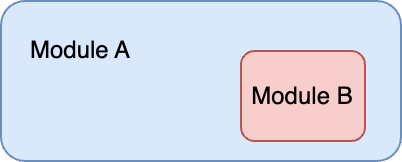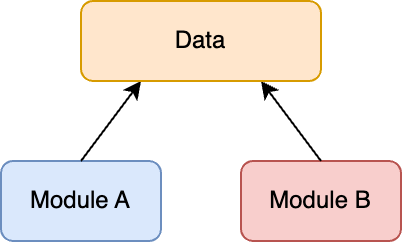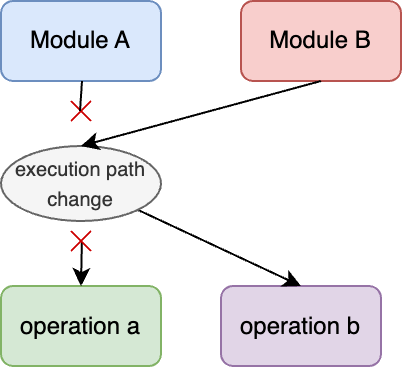Module Coupling
Module coupling concerns the interdependence between software Module: how much do a group of modules rely on each other?
Coupling is certainly not a bad thing on its own; it's necessary to develop a sufficiently complex system. However, some types of coupling are preferred over others.
Similar to Module Cohesion, the ISO/IEEE Systems and Software Engineering Vocabulary recognises six key types of module coupling.
Having names for these different coupling types is quite useful for identifying problem points in a code base and strategies for refactoring.
Content Coupling
Content Coupling is when a module is contained within another module.

Consider an Image module that contains various image type loading implementations: JpegImage, PngImage, GifImage, etc.
Given an image, a user doesn't need to know which submodule to call for their specific image type; they request to load an image, and the main module calls the required submodules.
image = Image.load("cat.jpg")
Content Coupling is universally considered a good idea and property of Khorikov's Well-Designed API.
Data Coupling
Data Coupling, also known as input-output coupling, is a type of coupling in which output from one software module is input to another.

For example, a data module that prepares data before running a transformation.
import data
import transform
my_data = data.prepare_data()
output = transform.transform_data(my_data)
Data coupling is also considered a good thing.
Common-Environment Coupling
Common-environment coupling is when multiple modules share the same global data.

Common environment refers to global variables, singleton state objects, system environment variables, etc.
It is not necessarily a bad thing. However, using a mutable global state can lead to hard-to-find bugs.
Sometimes, a better idea is to use sub-environments: global states within specific classes or modules, name-spaced environment variables, etc.
If you must use a global environment, ideally, it would be immutable.
Control Coupling
Control Coupling is when a module communicates information, perhaps via flags, to another to influence its execution.
.png)
For example, if Module A passes flags to Module B to change the mathematical operations that Module B performs.
Control coupling is mostly considered bad; in the example above, Module B is hard to test and verify since it's dependent on control information from Module A, which can lead to complex and hard-to-reason designs.
Data coupling is preferred over control coupling.
Hybrid Coupling
Hybrid Coupling occurs when different subsets of the range of values of a data item are used for separate and unrelated purposes.
.png)
It is a rare type of coupling but sometimes the only option, especially in limited memory environments (microcontrollers). You should avoid it unless you know what you're doing.
Pathological Coupling
Pathological Coupling occurs when one module is used to change the behaviour of another module.

I'm thinking of ideas like monkey patching or modifying private variables.
It's mostly a bad thing. Usually, it occurs when a module is repurposed to support functionality it wasn't originally intended for, and it often calls for a refactor.